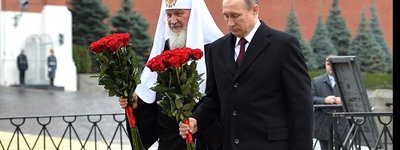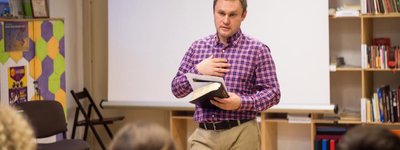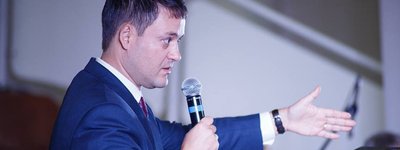Kyiv’s Sacred Geography
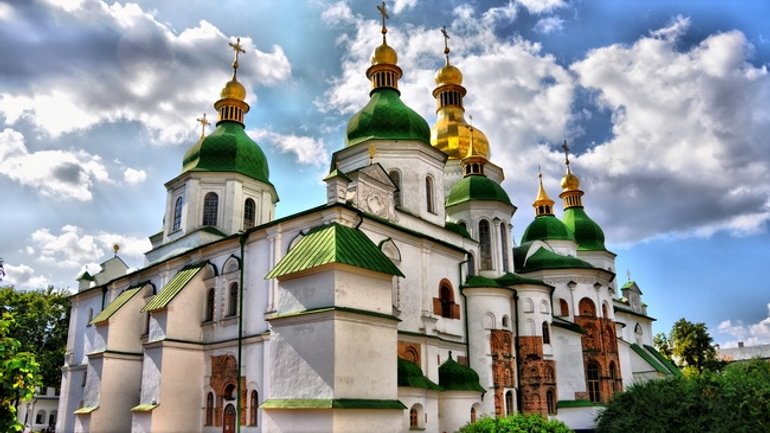
It was [the] unity of all those who believe in God that raised the Maidan from a merely political protest to a true “revolution of dignity.”
In a recent article, American Catholic philosopher and biographer of Pope St. John Paul II George Weigel writes of the “geography of sanctity” (“Kraków’s Geography of Sanctity,” First Things, June-July 2016, pp. 23-31). To Dr. Weigel, Poland’s former capital of Cracow was the site of the best and the worst of Poland’s history. It witnessed the physical destruction of human beings by the Nazis, and their attempted moral and spiritual destruction by the Communists. But it is also a place where memory combines with truth to create a national tradition that can guide Poland into the future.
To Weigel, four sites in Cracow embody Poland’s historical memory: the Market Square, the Wawel complex, Skałka (where St. Stanisław was murdered in 1079), and the Jagiellonian University. He also mentions the Błonia Krakowskie, where on 10 June 1979 Pope John Paul II delivered a sermon before over a million people that helped launch a “revolution of conscience.”
It might seem excessively imitative to show that Kyiv, too, has its sites of national memory, rich with spiritual power. But the parallels are irresistible. If at Cracow’s Market Square, trade routes connected the Baltic and Black Seas, the Slavic East and the Germanic West, Kyiv’s trading district of Podil abuts the Dnipro waterway that linked Scandinavia with Byzantium, and sits astride land routes from Asia to Europe. On the south side of Podil is the Mohyla Academy, where in the seventeenth century Ukraine saw a flowering of humanistic scholarship, as Orthodox theology absorbed Catholic and Protestant influences while music, art, architecture, and belles-lettres flourished. On a hill above Podil towers Saint Sophia or “Holy Wisdom,” an eleventh-century cathedral modelled on Hagia Sophia in Constantinople. It not only marks the Byzantine tradition in Ukrainian Christianity, but symbolizes the unity of faith and reason (which became artificially separated in the West) in the indivisible concept of Holy Wisdom – a concept exemplified by the scholars at the Mohyla Academy. Just down the hill to the southeast lies the Khreshchatyk, an ancient thoroughfare associated with the Baptism of Rus’, when the Ukrainians’ ancestors embraced Christianity. Further to the southeast, the Caves Monastery, overlooking the Dnipro, manifests the monastic tradition so important in Kyivan-Byzantine Christianity. It was there that the medieval chroniclers began the vital work of preserving the memory of the nation. It was also a major site of the seventeenth-century cultural renaissance.
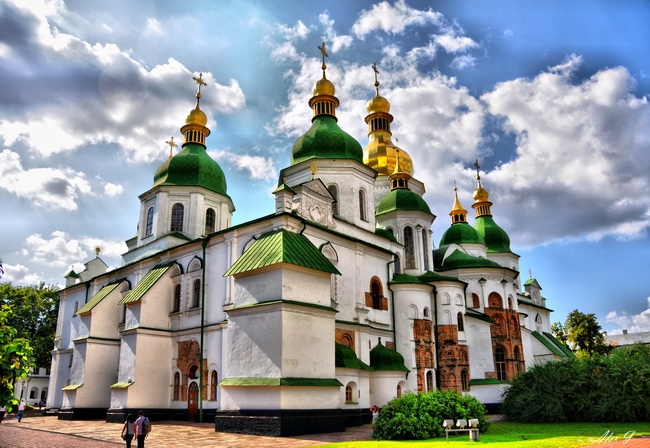
Like Cracow, Kyiv experienced the worst of the twentieth century. If Cracovians look to nearby Auschwitz and Nowa Huta for relics of the Nazi and Communist occupations, respectively, Kyivans have the tragic sites of Babyn Iar and Bykivnia to remind them of these totalitarian horrors.
Weigel sees Poland’s spiritual and historical experience, preserved in national memory, as a “rebuke to the Jacobin fallacy and to the Marxist fallacy.” Ukrainians are familiar with the Marxist fallacy of historical materialism. The Jacobin fallacy, however, may not be so widely appreciated. It holds that “politics, understood as the quest for power, construed as my ability to impose my will on you, is the principal driver of history.” This is an ongoing fallacy that can spiritually enslave a nation even today. But Weigel holds that national memory can liberate us, as long as it is “grounded in truth, especially the truth about the human person.” It can overturn both the Marxist and the Jacobin fallacy and, as Poland showed in the decade from 1979 to 1989, it can overcome “preponderant material force.”
That is also the lesson of the Maidan – a public space, like the Błonia Krakowskie, both open and defined, where a people armed with truth and national memory overcame preponderant material force. Two vital confluences took place there. First, the churches showed their solidarity with the people. Second, churches and other religious groups came together and, despite their differences, worked together for justice, truth, and peace. It was this unity of all those who believe in God that raised the Maidan from a merely political protest to a true “revolution of dignity.”
Today, however, new challenges will test the spiritual memory of Kyiv. George Weigel warns that “when new forms of materialism, more seductive than Marxism because they are less obviously brutal, threaten the civilizational project of the West, we need the example of Kraków.” In particular, he singles out the “bio-materialism” made possible by the new genetics and the bio-tech revolution. Though clothed in compassion, this new materialism is based on a concept of the human that is not essentially different from the “racist and economistic degradations” of the Nazi and Communist ideologies. Weigel is presumably referring to genetic manipulation, transgenderism, and the euthanasia or “right to die” movement – which uses a slogan as false and deceptive as “marriage equality.” It would be very foolish to suppose, says Weigel, that compared with the past century’s totalitarian secular ideologies, “today’s form of ultra-mundane secularism, the aggressiveness of which is ever more apparent around us, will have happier results in individual lives, in human relationships, or in public life.”
If the example of Cracow can inspire Poles to face the challenges of new ideologies, the example of Kyiv can strengthen Ukrainians to meet those same challenges. If Poles look to their “revolution of conscience” of the 1980s, Ukrainians can draw on their “revolution of dignity” of 2013-2014. And in doing so they can, like the Poles, find spiritual sustenance in the sacred geography of their ancient capital.





